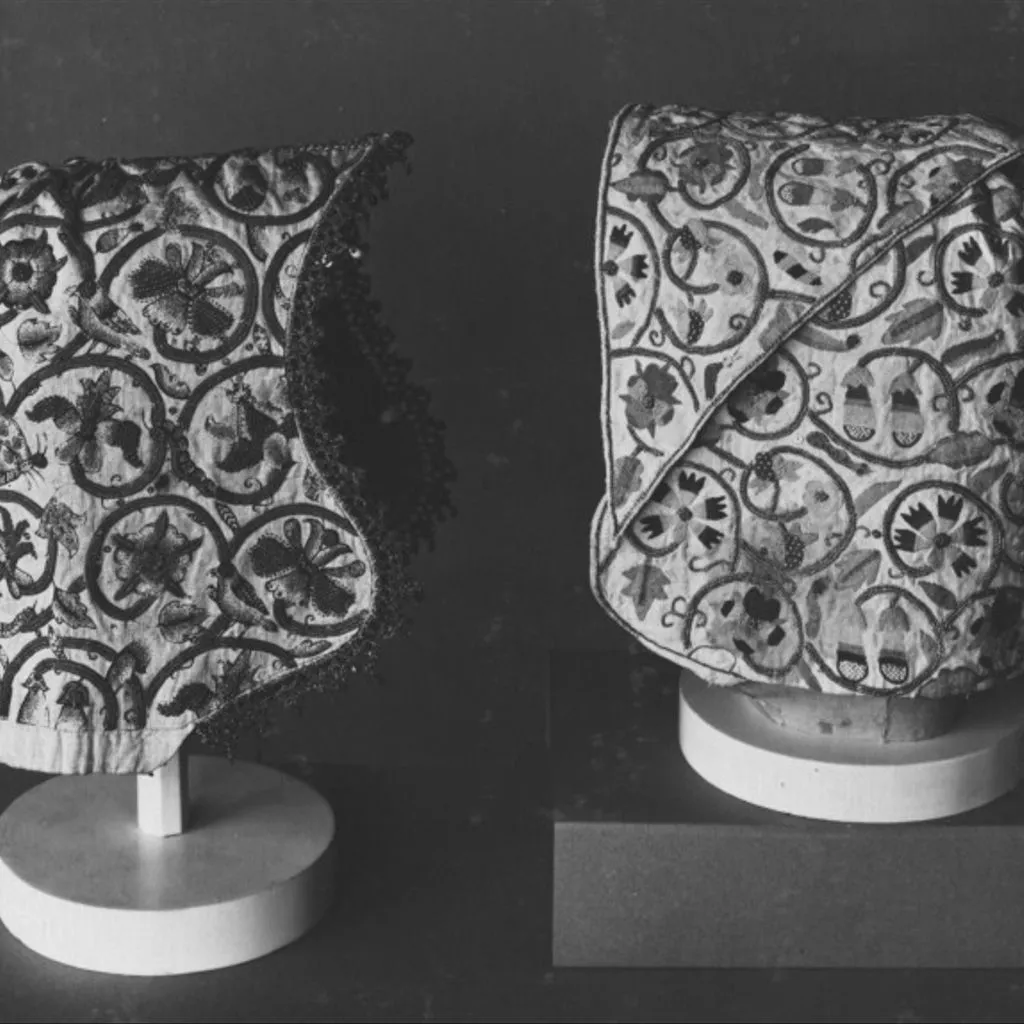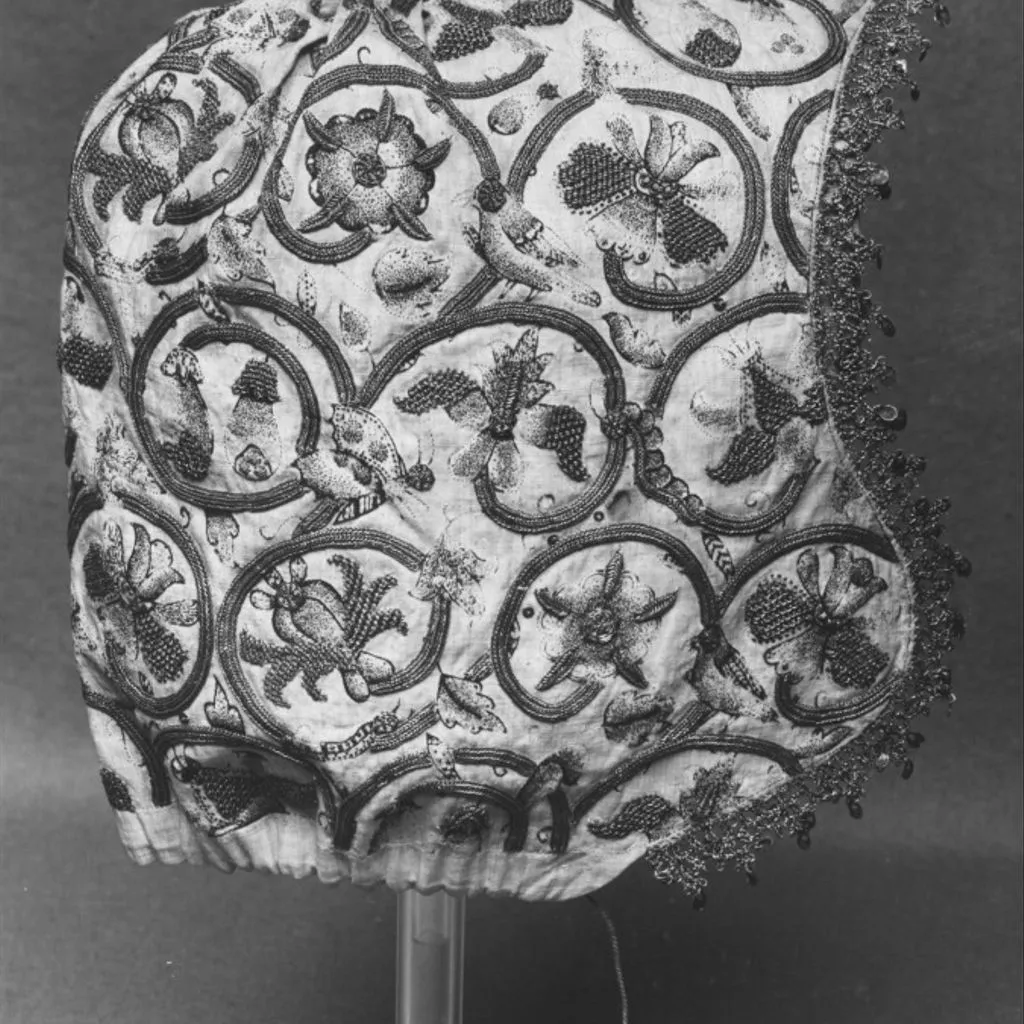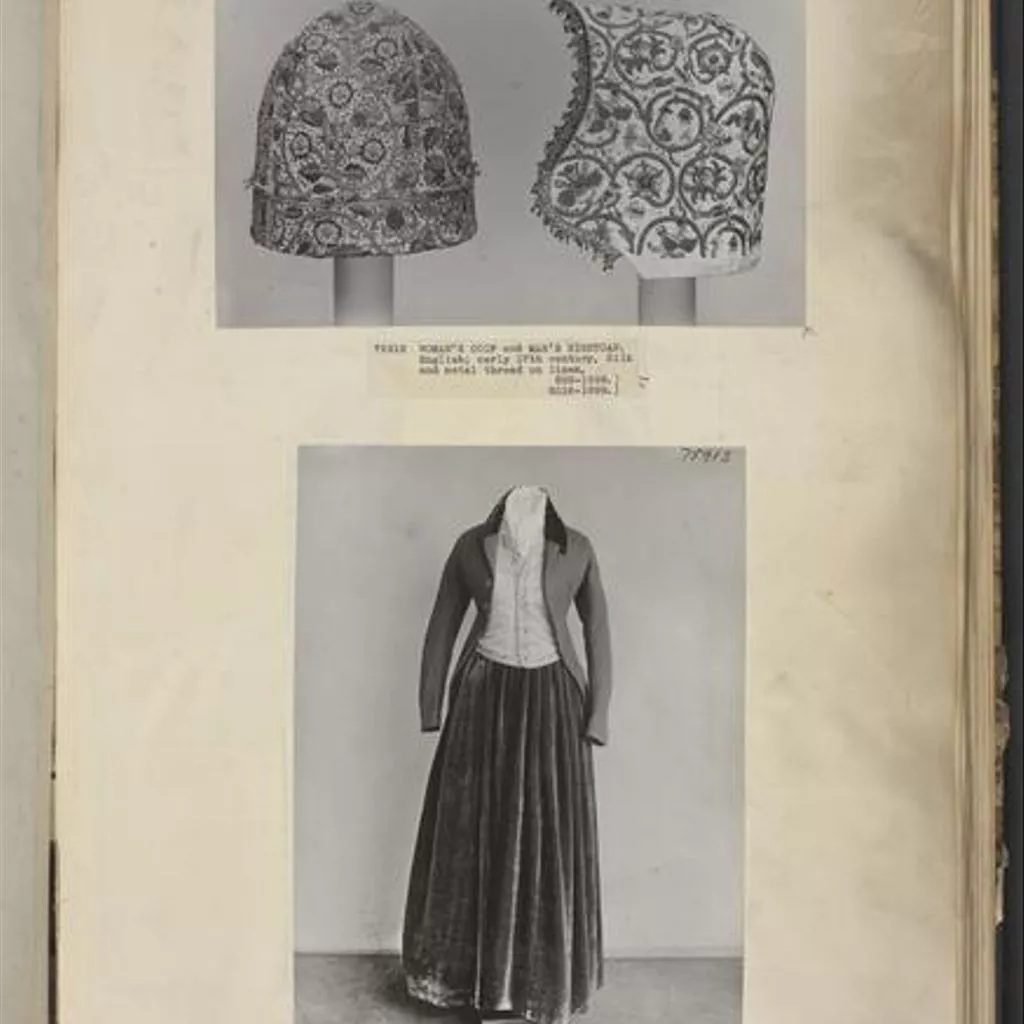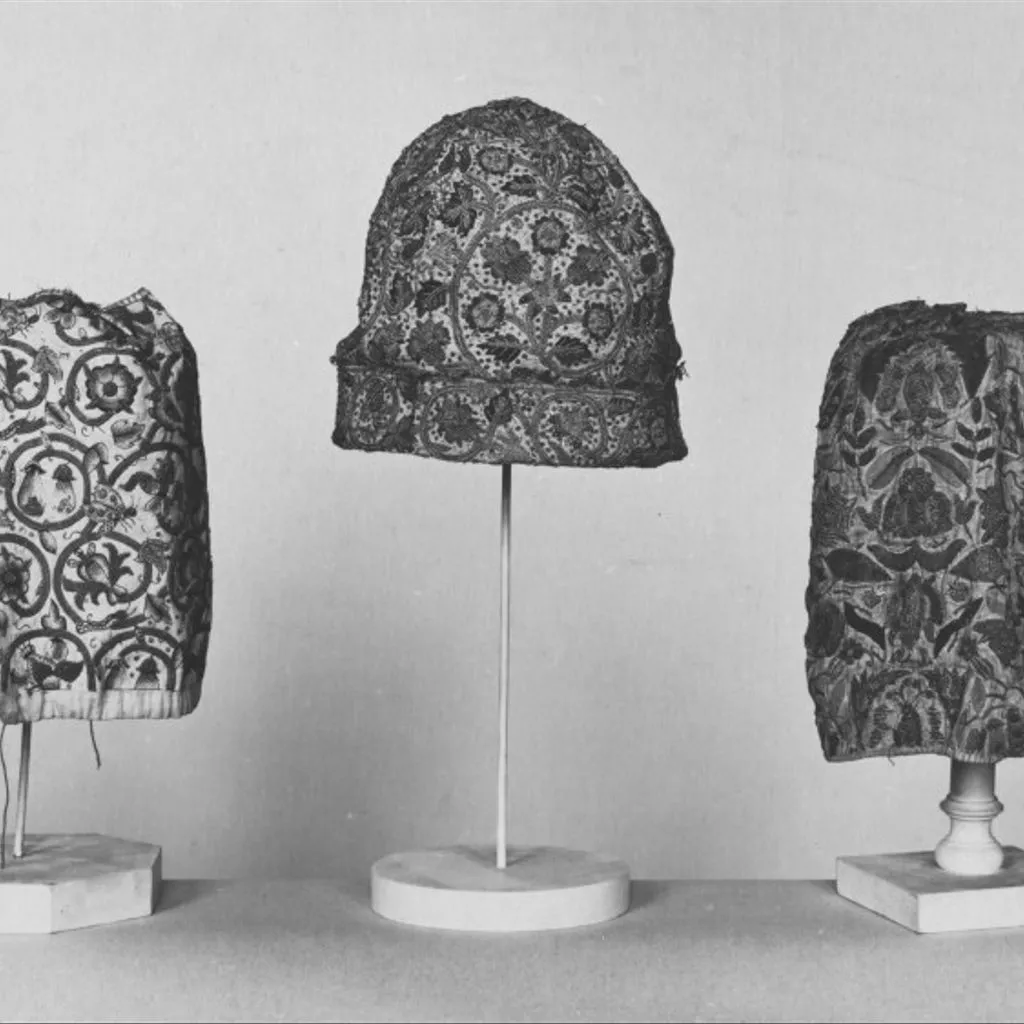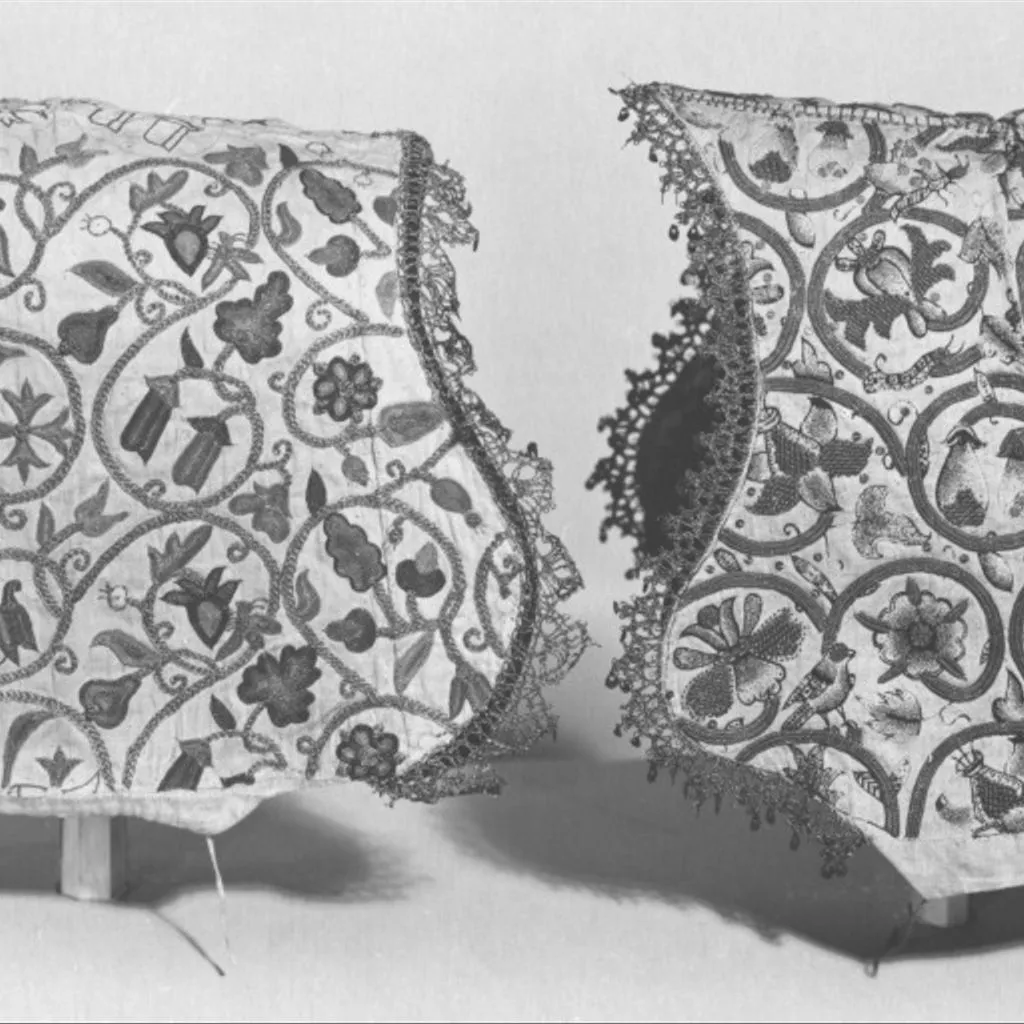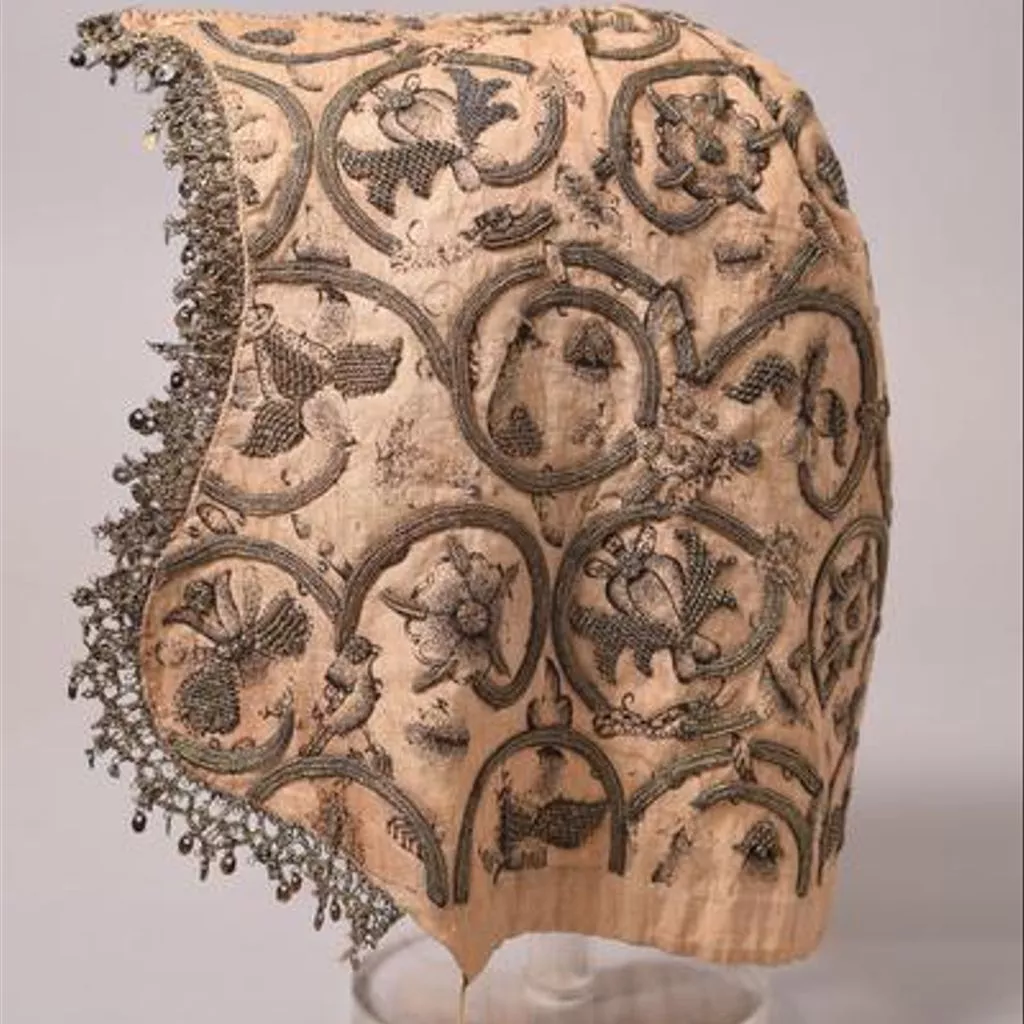Description
A woman's coif of linen, 1600-1624, English; Blackwork, silver gilt thread, spangles and bobbin lace
A linen coif embroidered with black silk in speckling stitch and outline stitch, and silver-gilt thread in plaited braid and detached buttonhole stitch, with silver-gilt spangles. The pattern consists of silver-gilt scrolling stems bearing blackwork roses, foxglove, insects and birds. The coif is unlined, with a casing at the bottom. The front is edged with bobbin lace in silver-gilt thread and spangles. The seam at the top appears to have been unpicked and re-sewn at a later date.
Woman's coif. English; first quarter 17th century. Linen embroidered with silver-gilt thread and silk in double ladder, detached buttonhole, plaited braid, cable chain, stem, satin, running and speckling stitches with knots and spangles. Trimmed with silver-gilt bobbon lace. []
This coif is a fine example of blackwork, a style of needlework popular in England in the late 16th and early 17th centuries. It was worked with a single colour of silk, usually black, as in this coif, but also blue, red or green on linen. This coif is a particularly lavish example as the blackwork has been embellished with embroidery in silver-gilt thread and trimmed with silver-gilt bobbin lace.
Until the end of the 17th century the coif was informal headwear for women. Plain linen versions were worn by the working-class. Middle-class and aristocratic women wore elaborately decorated coifs. It would have been worn by itself indoors, or with a hat on top in public. In Western Europe it was customary for both men and women to cover their heads in public up until the 1960s. A hat was an essential part of respectable dress and, from a health perspective, head coverings were considered necessary to protect against chills and disease.








